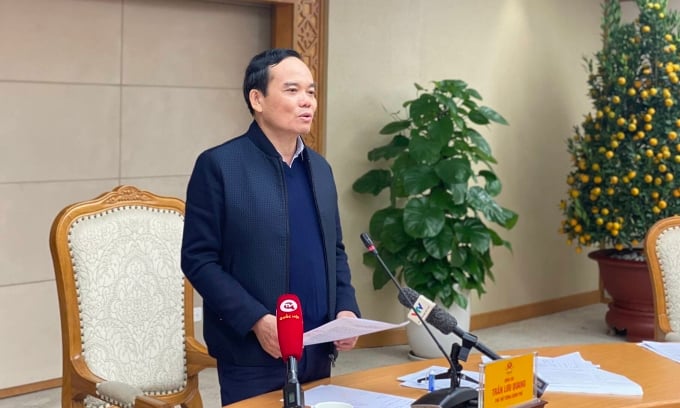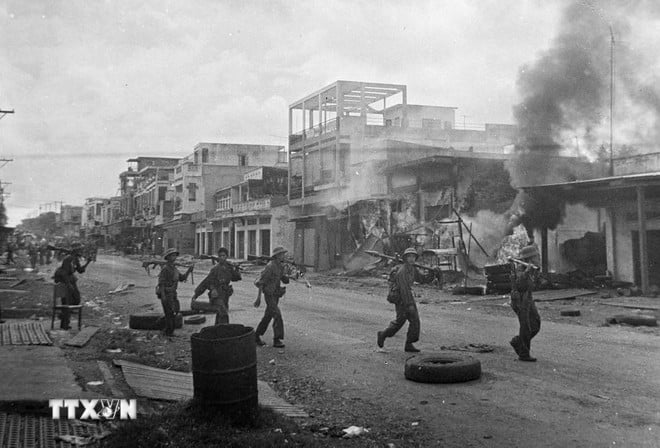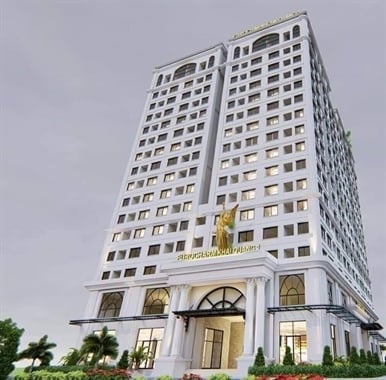Deputy Prime Minister Tran Luu Quang said that compared to other countries, Vietnam's administrative apparatus is cumbersome, making it difficult to increase salaries, so it is necessary to "overcome ourselves" to successfully merge districts and communes.
Chairing the meeting of the Steering Committee for the reorganization of district-commune administrative units in the 2023-2030 period on the afternoon of February 28, Deputy Prime Minister Tran Luu Quang noted that this is a difficult task, while the time for implementation is limited. From now until the planned merger of districts and communes is carried out, there are only 6 months left.
"Rearranging districts and communes affects localities and the policies of many people, so it requires careful work," said Mr. Quang, expressing that, along with a cumbersome apparatus, "many people and many opinions" also lead to ineffective work.
At the same time, Mr. Quang emphasized the spirit of having harmonious solutions and respecting the reasonable opinions of the grassroots. "We must respect the grassroots because they will bear the hardships and happiness," the Deputy Prime Minister said, requesting the most concise procedures possible.
The Deputy Prime Minister requested the Ministry of Information and Communications to increase communication about this policy via social networks to improve effectiveness.

Deputy Prime Minister Tran Luu Quang chaired a meeting on district-commune mergers on the afternoon of February 28. Photo: VT
At the meeting, Deputy Minister of Construction Nguyen Tuong Van said that among the districts merged in the next two years, 17 districts will become urban areas with 11 cities. However, he was concerned that the quality of urban areas in the merged districts will face many difficulties in meeting the necessary criteria.
He cited that Cao Loc district will be merged into Lang Son city (Lang Son province), but this district is 8 times larger than the city. So after the merger, how will the new Lang Son city meet the urban criteria?
Deputy Minister of Finance Vo Thanh Hung suggested that when localities develop plans to merge districts and communes, they need to immediately have solutions to arrange headquarters and public assets to avoid waste.
According to Minister of Home Affairs Pham Thi Thanh Tra, from now until 2025, 50 districts nationwide will be merged, including 11 mandatory districts, 16 encouraged districts, and 23 adjacent units. After the merger, the country is expected to reduce 14 districts. 19 districts are subject to merger but the local authorities have proposed not to implement it due to special factors.
From now until 2025, the country will reduce more than 600 communes after merging 1,243 communes (738 mandatory communes, 109 encouraged communes and 396 adjacent units). More than 500 communes are subject to rearrangement but will not be implemented due to specific characteristics.
According to regulations, the standard for mountainous and highland districts is a population of 80,000 and an area of 850 km2 or more; a plain district is from 450 km2; a district is from 35 km2 with a population of at least 150,000. The population size of a commune is from 5,000 to 8,000 or more, with an area of 30 km2. Districts and communes subject to compulsory merger have an area and population of less than 70% of the standard; districts have an area of less than 20% and a population of less than 200%; communes have an area of less than 20% and a population of less than 300%.
In the 2019-2021 period, the National Assembly Standing Committee issued 48 resolutions to reorganize 21 district-level units and 1,056 commune-level units in 45 provinces and cities. Thereby, the country has reduced 8 district-level units and 561 commune-level units. The reorganization helps reduce 3,437 commune-level agencies and 429 district-level agencies, reducing state budget expenditures by VND 2,000 billion.
Source link


![[Photo] Looking back at the impressive moments of the Vietnamese rescue team in Myanmar](https://vstatic.vietnam.vn/vietnam/resource/IMAGE/2025/4/11/5623ca902a934e19b604c718265249d0)

![[Photo] "Beauties" participate in the parade rehearsal at Bien Hoa airport](https://vstatic.vietnam.vn/vietnam/resource/IMAGE/2025/4/11/155502af3384431e918de0e2e585d13a)









![[Infographic] Biography of the new Head of the Central Economic Commission Tran Luu Quang](https://vstatic.vietnam.vn/vietnam/resource/IMAGE/2025/1/20/c35e0fe6275d4a15abd4ab3cbc2ca8ab)

















![[Photo] Summary of parade practice in preparation for the April 30th celebration](https://vstatic.vietnam.vn/vietnam/resource/IMAGE/2025/4/11/78cfee0f2cc045b387ff1a4362b5950f)



























































Comment (0)